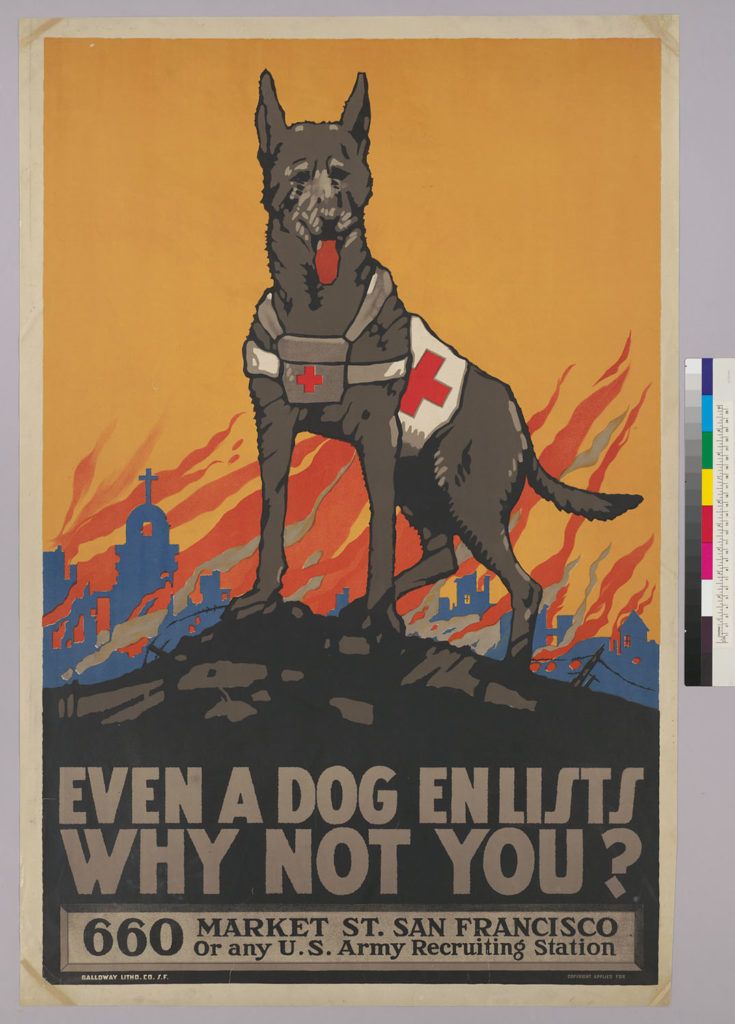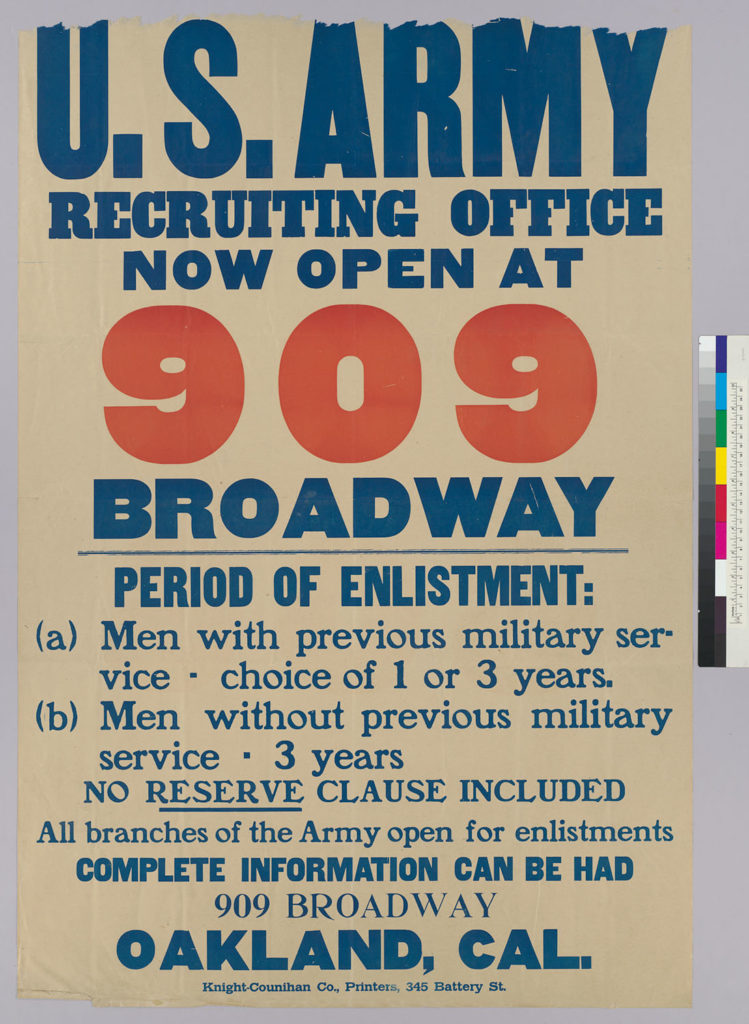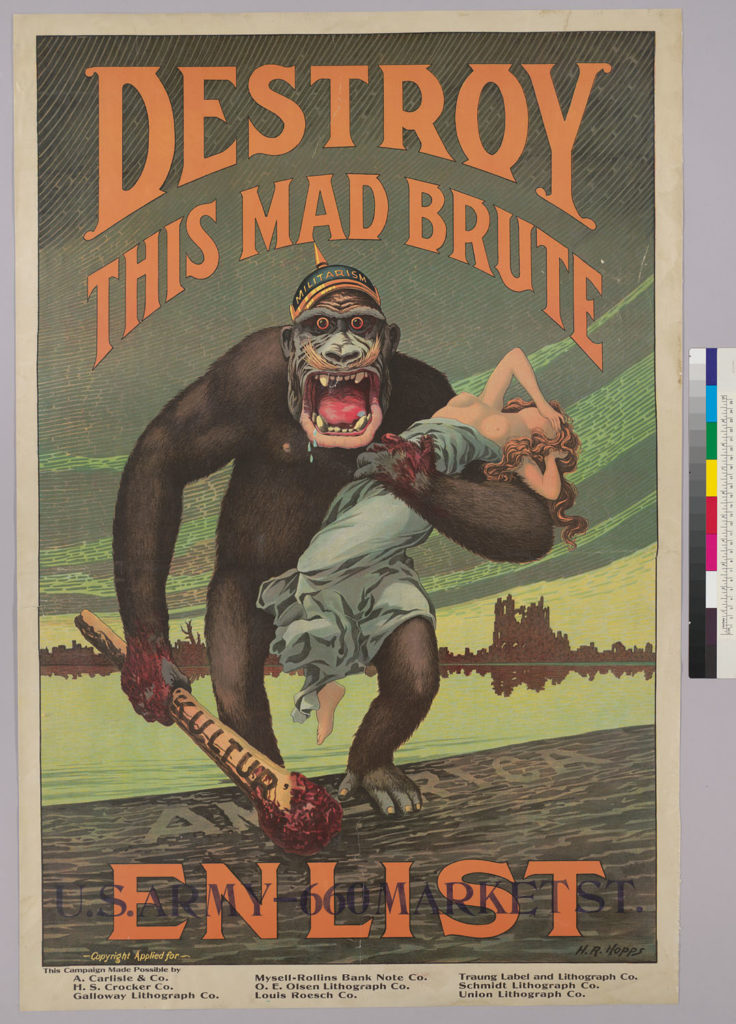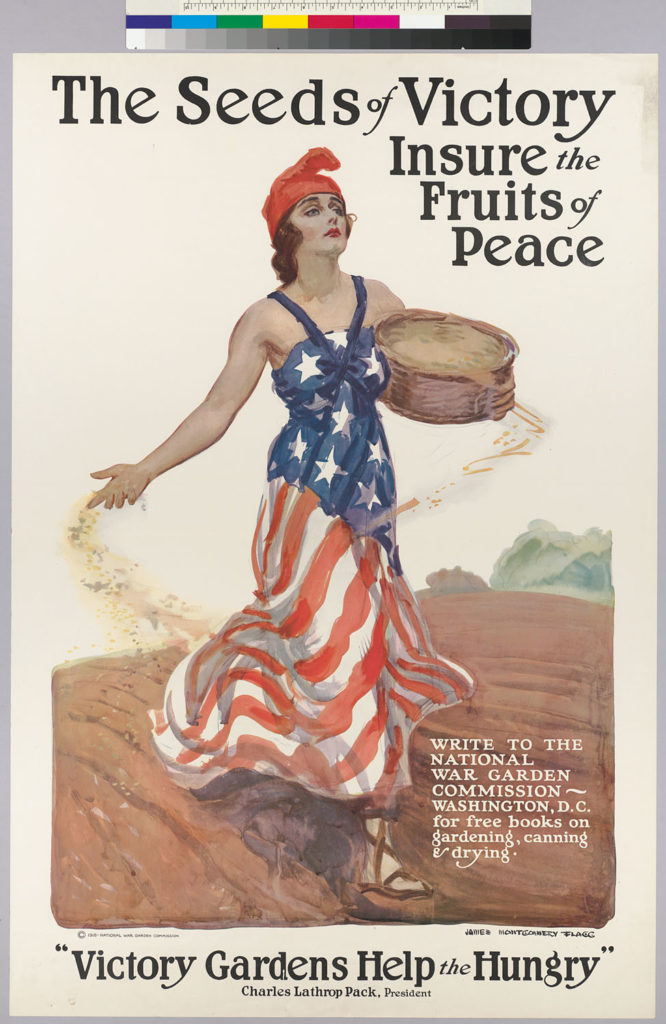by Sonia Kahn from the Bancroft Digital Collections Unit.
One-hundred years ago today, on April 6, 1917, the House of Representatives voted 373 to 50 formally authorizing the United States’ declaration of war against Germany. As a direct result, the US joined its allies Britain, France, and Russia in the war to end all wars. More than 116,000 American soldiers would lose their lives in a war that many thought was Europe’s problem. The Battle of Argonne Forest alone would cost more than 26,000 American lives, making it the deadliest single battle in American history. The conflict would end up being the third bloodiest in US history, with only the Civil War and Second World War producing more military deaths.
World War One had ignited in a frenzy in the summer of 1914, but for almost three years the United States had managed to keep itself out of the Great War. That’s not to say that the US felt no impact from the conflict. The sinking of the British liner Lusitania by a German U-boat in May 1915, for example, resulted in the deaths of 128 American passengers onboard and tensed US-German relations.
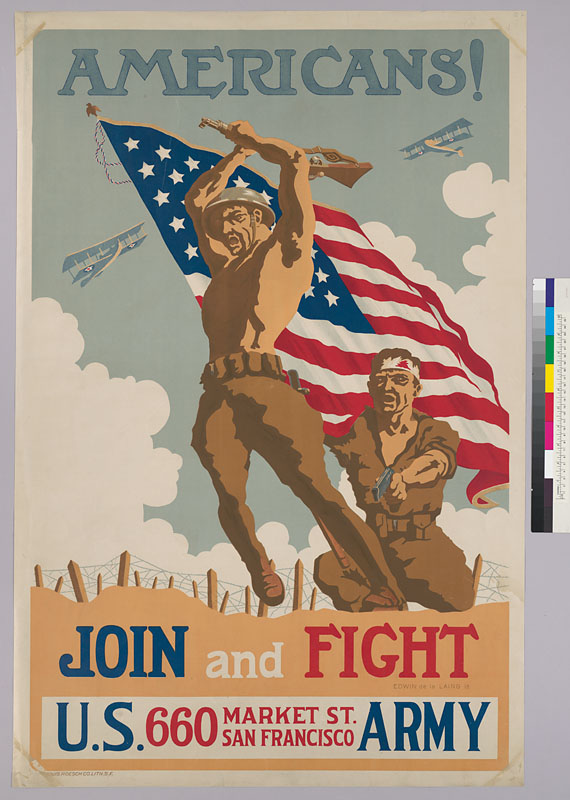
On April 6, America joined the fight against the Kaiser’s troops. But much was needed to fight a war. Soldiers, food, supplies, had to be acquired. To get Americans on board with the war effort the government produced a variety of propagandist war posters encouraging everything from the obvious signing up to join the armed forces, and buying war bonds, to urging women to join the Red Cross. Though the US homefront was not terribly affected by the conflict, some posters even encouraged women to plant Victory Gardens, almost as an eerie foretelling of what would come in the Second World War.
The Bancroft Library houses a collection of more than 170 American war posters from the First World War. Some of these posters have addresses for army recruiting stations in San Francisco and Oakland, a reminder that a piece of a worldwide conflict played out in our backyard.
View the digitized collection here: American war posters from the First World War [BANC PIC 2005.001]
